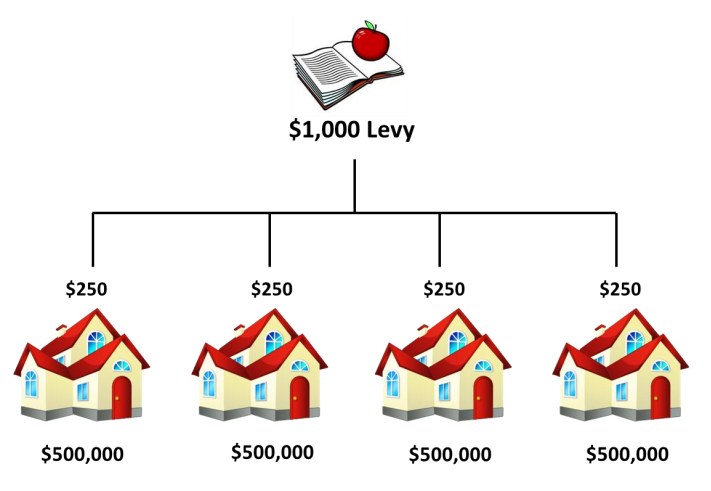Levy Facts
Thank you voters! As of Feb. 22, 2024 the EP%O levy is passing with 55.36% and the tech levy is passing with 56.25%. Both of these levies are integral to the operations of our school district. These levies pay for teachers, staff, programs and services that contribute to a well-rounded and quality education for the children of our community. We are dedicated to honoring your investment and being good stewards of public funds, your support is greatly appreciated and not taken for granted.
The current voter-approved levies end in 2024. The proposed Feb. 13, 2024 replacement levies extend them through 2028. These are not a new tax but replace the current levies.
The levies help pay for things the state does not fund or underfunds such as:
Financial Impact
The replacement EP&O and technology capital levies total between $7.1 and $8.2 million per year for each of the four years. A property owner in our district would pay an estimated total combined tax rate of $3.00 per $1,000 of assessed value beginning in 2025. Below is the estimated total school district combined bond and levy rate per $1,000 assessed value. The rates are estimates based upon data from the Whatcom County Assessor’s Office.
| Year | EP&O Levy | Tech Levy | Existing Bond | Total Tax Rate* |
|---|---|---|---|---|
| 2025 | $2.10 | $0.38 | $0.52 | $3.00 |
| 2026 | $2.10 | $0.38 | $0.52 | $3.00 |
| 2027 | $2.10 | $0.38 | $0.52 | $3.00 |
| 2028 | $2.10 | $0.38 | $0.52 | $3.00 |
space
Amount Collected per Levy
| Year | EP&O Levy Amount | Tech Levy Amount |
|---|---|---|
| 2025 | $6 million | $1.07 million |
| 2026 | $6.3 million | $1.135 million |
| 2027 | $6.6 million | $1.2 million |
| 2028 | $6.9 million | $1.265 million |
space
Funding the Gap
The EP&O levy and technology capital levy make up about 18% of Meridian School District’s budget. The district receives about 82% of its budget from state and federal funding.
Federal Funds
The federal government provides financial support for high-poverty schools and students who require additional resources in order to obtain a fair, equitable, high-quality education. Federal dollars pay for a percentage of programs including Vocational Education, Special Education, Native American Education, English Language Acquisition, Disability and Nutrition as well as special grants.
State Funds
The Basic Education Act of 1997 set a formula for giving each of the state’s school districts a certain dollar amount for every Full Time Equivalent (FTE) student (or, each student attending school all day). For students who need extra services, such as Special Education programs, Gifted Education, or Bilingual Education, there are state and federal formulas for additional dollars.
Local Funds
Local funding is generated through levies and bonds approved by the voters. Both are based upon local property valuations—property owners pay a set amount for each $1,000 of property value. Once approved, bond and levy amounts cannot increase with property values. When property values increase in a community, the amount paid per $1,000 decreases. Senior citizens and low income property owners may apply for an exemption from bond and levy taxes.
Frequently Asked Questions
More Information:
Levy Fact Sheet (English)
Levy Fact Sheet (Spanish)
Contact:
District Office
360-398-7111
Daniel Yorton
Director of Business and Finance
Property Tax Exemption for
Senior Citizens and People with Disabilities
If you are a senior citizen or a person with disabilities with your residence in Washington State you may qualify for a property tax reduction under the property tax exemption for senior citizens and people with disabilities program. Learn more on the Whatcom County Auditor’s Website.




